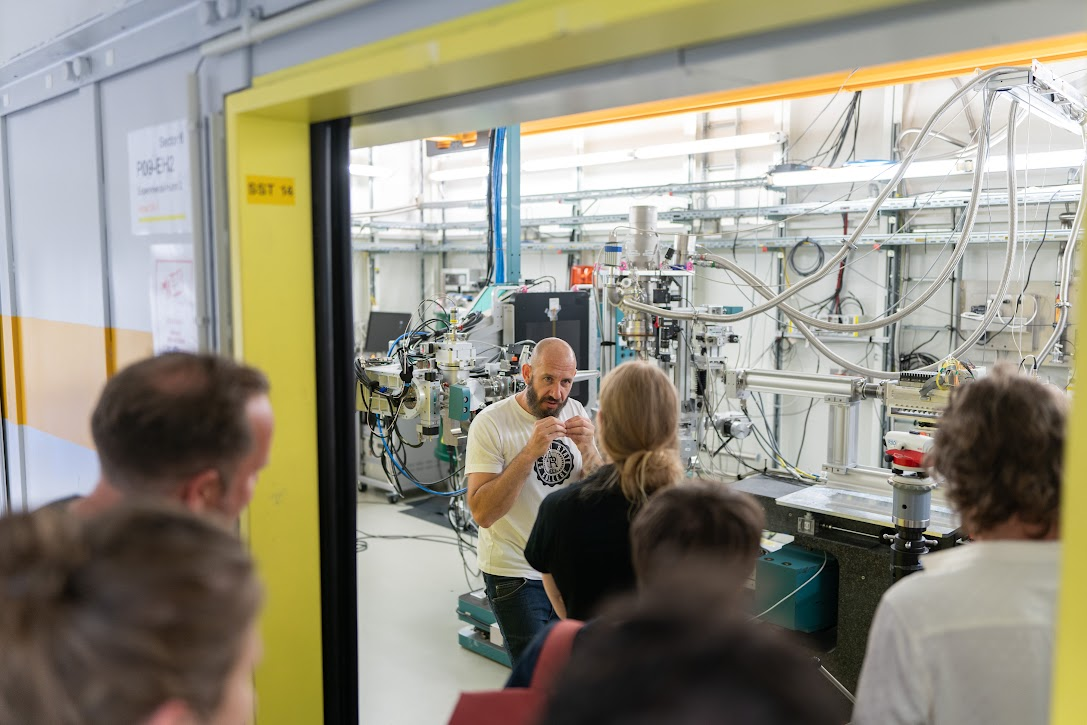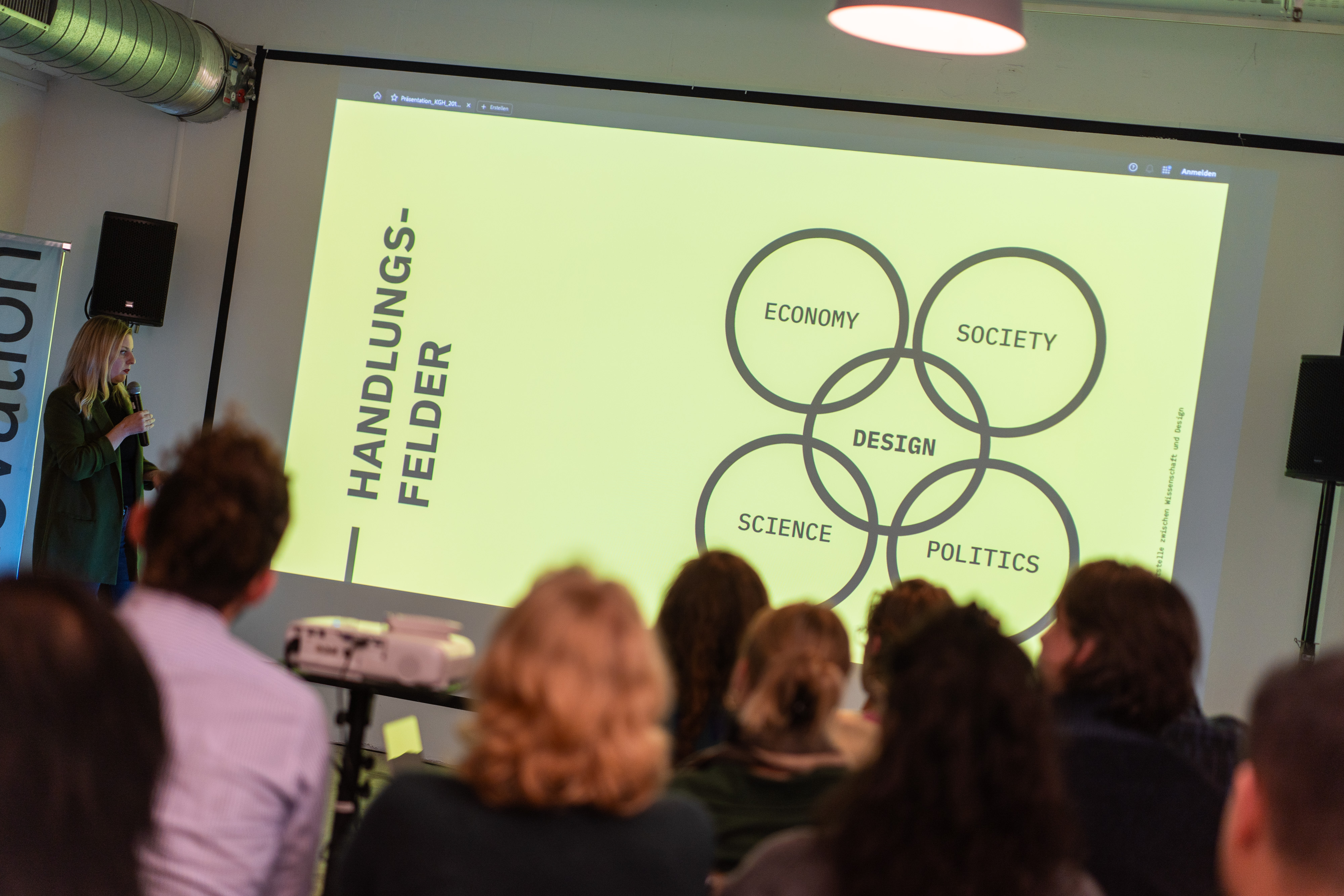Cross Innovation Lab: A new path to Greater innovation
In the Cross Innovation Lab, creative minds from basic research at DESY and applied research at HAW Hamburg work hand in hand to develop fresh methods for transfer innovations through transdisciplinary exchange. This workshop is part of the joint project ‘TransferWelten’ by DESY and HAW Hamburg.

When Henry Ford wrote one of the greatest success stories in industrial history at the beginning of the 20th century, he owed it in no small part to a process we now call “transfer innovation” or, in English, “cross innovation”: one industry adopting ideas from another—or from an unrelated scientific discipline. Ford derived the assembly line production of his legendary Model T from the meatpacking industry: during a visit to a slaughterhouse, he observed how animals were processed in a continuous workflow via a conveyor belt attached to the ceiling. He transferred this principle to his automobile factory.
This made the Model T the first mass-produced car in the world, with over 15 million units manufactured by Ford between 1908 and 1927. Until it was surpassed by the VW Beetle in the 1970s, it remained the best-selling car model. Priced at just $850 (equivalent to around €22,000 today), it was incredibly affordable, making car ownership possible for the general public for the first time.
Since then, countless other examples of cross innovation have emerged. Sushi bars now operate using the same principle as airport baggage conveyors, the first foldable baby stroller was inspired by the collapsible landing gear of airplanes, and magnet tables in modern particle accelerators are now lighter yet more stable thanks to borrowing from the biological construction principles of tiny diatoms.
TransferWelten: Science and creative industries in exchange
Cross innovation often happens more or less by chance. However, within the joint research project "TransferWelten", funded by the German Federal Ministry of Education and Research (BMBF), DESY and the Hamburg University of Applied Sciences (HAW Hamburg) aim to systematize and actively promote this principle. Their goal is to develop a method toolkit over three years, combining fundamental research from DESY and applied research from HAW Hamburg. This toolkit will be accessible to anyone looking to drive innovation.
A key tool within this toolkit is the Cross Innovation Format. Just as Henry Ford once did, this approach deliberately brings together expertise from different fields—in this case, research and the creative industries—to generate ideas for future-oriented products and methods in workshops. This transdisciplinary form of innovation transfer is also a central focus of Hi-Acts, which funded the first pilot workshop of this kind for TransferWelten. Hi-Acts commissioned Hamburg Kreativ Gesellschaft, a municipal agency specializing in innovation through creative collaboration, to conduct the workshop. With a vast network of creative professionals from various industries, they facilitate such workshops and provide compensated participation.

The Pilot Workshop: From Brainstorming to Innovation
In the workshop, five scientists and engineers from DESY collaborated with four experts from creative fields such as media and design. Guided by two specialists from Hamburg Kreativ Gesellschaft, they engaged in a structured brainstorming process. Two transfer specialists from DESY and HAW Hamburg monitored the session for TransferWelten.
Over the course of three weeks, the participants met nine times, with a final session on the tenth day to present their results. “The only requirement was that our innovation had to be sustainable,” explained Sebastian Mends-Cole, a Hamburg-based product designer selected by Kreativ Gesellschaft.
The lab started by defining a broad theme before generating concrete ideas. For this, participants used the Design Studio method: each researcher, engineer, and creative professional sketched ten ideas in ten minutes, no matter how wild or impractical they seemed. “There was no time to overthink,” said Laslo Seyda, a Hamburg-based journalist who participated as one of the creatives. “This rapid visualization—just grabbing a marker and brainstorming—was a real eye-opener for me, something I rarely experience in my work. As a journalist, I usually have to critically analyze ideas, research extensively, and carefully weigh arguments.”
For David Reuther, a DESY engineer specializing in photon research at PETRA III, this approach was also new: “As an engineer, I’m used to immediately considering the next steps of an idea. Here, we just let creativity flow, and I had to accept wild thoughts from others without filtering them. But when I saw how methods like Design Thinking transformed the initial chaos into a structured solution, I was amazed. I found it incredibly enriching and hope to apply it to my work at DESY.”
The Outcome: SOL.R – A Public Solar Charging Station
One particularly effective method used was the "product field" approach. Participants wrote down key sustainability criteria on sticky notes, arranged them on a board, and then formulated a single sentence that described a possible innovation.
Their result was SOL.R—a public solar-powered charging station where users can charge their smartphones, tablets, and laptops. However, in exchange for electricity, they must answer a short quiz about energy consumption and sustainability. The more questions they answer, the more energy they can access.
This “Trojan Horse” approach offers a free service while subtly raising awareness about climate and environmental issues.
Beyond providing clean energy, the station would also serve as a testbed for DESY’s sustainable technologies, such as new battery concepts, efficient energy storage, and eco-friendly materials. It would be modular in design, allowing for various types of solar panels and interchangeable components.
The first prototype could be installed in Hamburg’s new Science City Bahrenfeld, with the potential for expansion to parks, schools, and public spaces. However, further steps are needed: identifying project leads, securing funding, and refining the concept through additional workshops. “SOL.R could help explain the purpose of large-scale accelerator facilities like PETRA III and PETRA IV to the public,” noted Sebastian Mends-Cole.

Bridging Science, Creativity, and Society
Mends-Cole has participated in numerous Cross Innovation Labs, but usually with business professionals rather than scientists and engineers. “For me, it was fascinating to see how researchers initially approached the process with skepticism but later realized that formulas and calculations alone wouldn’t move them forward.”
According to him, a significant gap still exists between science and society—one that needs to be bridged. “If researchers and external professionals collaborated more frequently instead of working in silos, innovation could be dramatically accelerated.” While not every workshop will reinvent the wheel, fresh recombinations of existing knowledge often lead to breakthroughs. And an outsider’s perspective can sometimes provide the missing puzzle piece.
The Future of Cross Innovation at TransferWelten
The goal of TransferWelten is to foster innovation and knowledge transfer through interdisciplinary collaboration. While cross innovation is not new to DESY and HAW Hamburg, its potential is far from exhausted.
Zahra Saleh from DESY’s Innovation & Technology Transfer department recalled a previous case: “A fashion designer approached us wanting to develop stylish, UV-protective clothing for people with autoimmune diseases.” It turned out that a researcher in DESY’s materials science department was working on biomaterials that fit the project perfectly.
Tatjana Timoschenko, co-project manager of TransferWelten at HAW Hamburg, emphasized: “Research centers and universities often possess knowledge that we don’t even realize is applicable until we engage with external partners.” Both fundamental research at DESY and applied research at HAW Hamburg likely hold countless solutions to societal challenges and product development—just waiting for the right connection to be made.
With additional Cross Innovation Formats, TransferWelten aims to systematically address this challenge. The key is bringing the right people together—and platforms like Hi-Acts, supported by organizations like Hamburg Kreativ Gesellschaft, are ideally positioned to facilitate this exchange.
“We need more initiatives and platforms to foster dialogue,” said Laslo Seyda. “That way, our knowledge silos can overlap and enrich one another. DESY, HAW Hamburg, and similar institutions are beginning to recognize this—and could become game-changers for Germany as an innovation hub.”
Henry Ford would likely be pleased to see that the principle he pioneered over a century ago is experiencing a revival. The difference? Today, the assembly line runs in our minds. But even innovation itself must continually reinvent itself.

